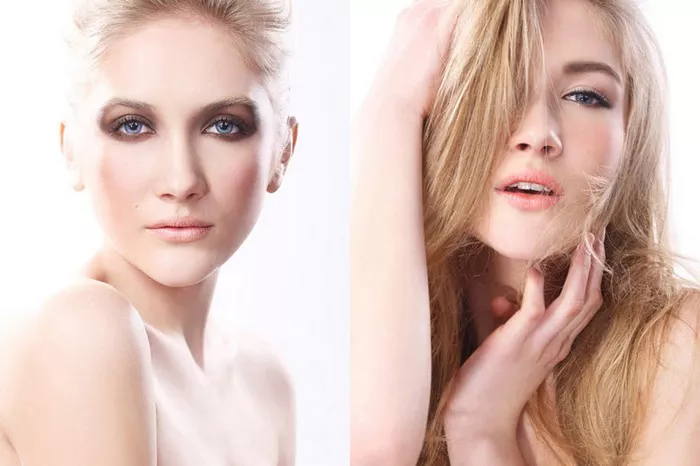As the beauty and wellness industries continue to expand, standing out in a competitive market has become increasingly important. One way brands can distinguish themselves is by conducting clinical testing, which provides evidence of a product’s effectiveness and supports strong marketing claims. However, clinical testing is both expensive and time-consuming, often adding significant costs and extending timelines for product launches. Despite the investment required, clinical testing can enhance brand reputation and boost consumer confidence. Here’s a closer look at how clinical testing works, its benefits, and potential risks.
What Is Clinical Testing?
Clinical testing involves evaluating a product’s effects on human subjects within a controlled, scientific environment. The process employs advanced measurement technologies and precise photography to track small changes in various skin attributes, including hydration, sebum production, wrinkle depth, pigmentation, redness, and texture. These tests typically span 12 to 16 weeks and involve dozens of participants.
The costs of clinical testing can range from $25,000 to $40,000 per product, depending on the scope and duration of the study, according to Lisa Mattam, founder and CEO of Sahajan, a Canadian skincare brand. The results of clinical studies allow marketers to make robust claims about a product’s efficacy, often accompanied by before-and-after imagery to highlight its effects.
Is Lab Packaging Sufficient for Clinical Studies?
In some cases, lab sample packaging may be acceptable for clinical testing. If a product’s usage instructions call for a small amount of the product, such as a “pea-sized amount,” the packaging can be flexible. However, for products that require more precise dosing, such as “two pumps per day,” it is important to use the final product packaging to ensure accurate measurement and consistency during the study.
Laura Lam-Phaure, founder of Lam Phaure Beauty, advises using final packaging whenever possible, even if it doesn’t include artwork. This ensures that any potential issues with the product’s performance are captured and protects the brand’s reputation by preventing biases related to packaging or branding.
Risks and Benefits of Clinical Testing
While clinical testing can yield valuable results, there are risks, particularly financial ones. If a product does not produce the expected results, the brand’s investment may be lost. However, according to Mattam, brands should have a solid understanding of their product’s performance before committing to a clinical study, based on internal testing and data from ingredient manufacturers.
Despite the financial risk, clinical testing provides benefits, including results that are peer-reviewed by experts such as dermatologists, clinical statisticians, and pharmacists. These findings are often considered the most reliable, offering strong legal protection and bolstering consumer confidence.
Selecting a Clinical Testing Facility
Choosing the right clinical testing facility is crucial. Testing can be managed internally, typically by a brand’s regulatory or research and development teams, or outsourced to a third-party manufacturer. Lam-Phaure explains that many cosmetic testing labs offer clinical testing services, so it’s essential to find a facility that meets specific protocol requirements and offers competitive pricing.
For over-the-counter (OTC) products, such as sunscreens or acne treatments, additional manufacturing and testing standards must be followed, and certifications from the U.S. Food and Drug Administration (FDA) may be required. A strong relationship with the testing facility can also ensure flexibility, as labs may offer updates during the study and allow brands to stop tests early if results are not promising.
Other Testing Requirements for Beauty and Wellness Products
In addition to clinical testing, several other essential tests must be conducted before a product is marketed. Safety and stability testing ensure the product is safe for use and will remain effective throughout its shelf life. Microbial testing checks for bacteria growth potential, and compatibility testing assesses the stability of the product in its final packaging.
Lam-Phaure highlights that stability and compatibility testing are particularly challenging, especially when using recycled materials for packaging. High percentages of post-consumer recycled content (PCR) can interfere with the formula’s stability, requiring reformulation.
Other tests, such as heavy metal and contaminant testing, are becoming more common as brands seek to avoid harmful byproducts like benzene. Brands may also seek certification from third-party groups like the American Academy of Dermatology or the National Eczema Association to substantiate claims like “dermatologist-approved” or “non-comedogenic.”
FDA Requirements for Beauty Products
Under the Modernization of Cosmetics Regulation Act (MoCRA), the FDA does not mandate specific testing for beauty and wellness products. However, manufacturers must maintain records demonstrating that their products are safe for use. If a consumer reports an adverse reaction, the brand must be able to prove that the product was adequately tested for safety.
Many retailers require a Certificate of Analysis (COA), which provides test results and information about the testing facilities used.
Eye Safety Testing
For products intended for use near the eyes, such as eyeshadow, mascara, or lipstick, eye safety testing is essential. Brands often conduct this testing on a broad range of products, even if they are not specifically marketed for the eyes. This helps protect the brand from potential legal issues if a product is used near the eyes in marketing materials or on consumers.
Clinical Testing vs. Consumer Perception Testing
While clinical testing involves precise scientific measurement, consumer perception testing relies on subjective feedback from consumers who use the product over a set period, typically 4-8 weeks. This form of testing is less expensive, costing about a quarter of the price of clinical studies. However, the results are less scientifically rigorous and are more vulnerable to legal challenges.
Clinical studies are necessary for making substantial claims, such as “reduces fine lines by 90%,” while consumer perception tests may suffice for softer claims, like “makes skin feel smoother.” Both testing methods provide valuable insights, helping brands understand consumer reactions and refine their marketing strategies.
Conclusion
Clinical testing is a powerful tool for beauty and wellness brands seeking to substantiate product claims and build consumer trust. While the process can be costly and carries risks, it offers scientifically-backed evidence that can significantly impact a brand’s reputation. By understanding the different testing methods and their benefits, brands can make informed decisions that balance innovation, safety, and consumer satisfaction.
Related Topics





























